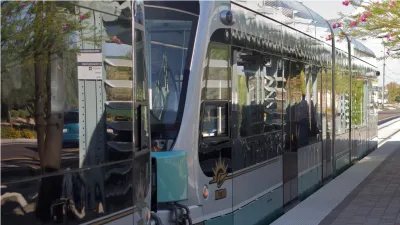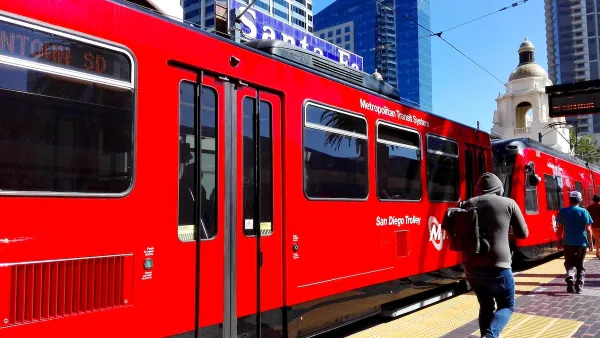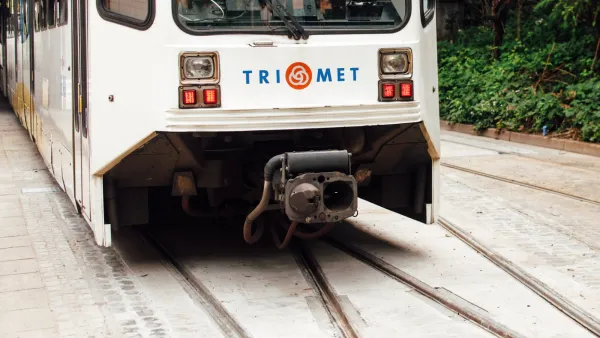The answer to the question in the headline is “not very.” Thirty years into the initial experiment, however, light rail has not been the game changer it was hoped to be.

Yonah Freemark details the complicated legacy of the light rail investments of the 1980s, which have not been very successful in increasing the share of trips taken on transit. Buffalo, Portland, Sacramento, San Diego, and San Jose opened light rail in the 1980s, “[yet] it doesn't take much digging to find that over the past thirty years, these initial five systems in themselves neither rescued the center cities of their respective regions nor resulted in higher transit use — the dual goals of those first-generation lines.”
“According to an analysis of Census data, in four of the five cities with new light rail lines, the share of regional workers choosing to ride transit to work declined, and the center city's share of the urbanized area population declined, too,” reports Freemark. San Jose was the only exception.
Thus, light rail investments do not automatically result in increased transit use. In fact, “Two of the initial light rail metros, Buffalo and Portland, had significantly higher transit mode shares in 1980 (7.9 and 9.7 percent, respectively) than they did in 2012.”
Freemark’s point is not to call for an end to light rail investments. Rather, he insists that cities cut back on the conflicting policies of continuing highway expansion, and develop a consistent transportation strategy: “Each region also built free highways during the period (I-990 in Buffalo, I-205 in Portland, US 50 in Sacramento, CA 54 in San Diego, and CA 237 in San Jose), and each continued to sprawl (including Portland, despite its urban growth boundary). These conflicting policies had as much to do with light rail's mediocre outcomes as the trains themselves — if not more.”
FULL STORY: Have U.S. Light Rail Systems Been Worth the Investment?

National Parks Layoffs Will Cause Communities to Lose Billions
Thousands of essential park workers were laid off this week, just before the busy spring break season.

Retro-silient?: America’s First “Eco-burb,” The Woodlands Turns 50
A master-planned community north of Houston offers lessons on green infrastructure and resilient design, but falls short of its founder’s lofty affordability and walkability goals.

Delivering for America Plan Will Downgrade Mail Service in at Least 49.5 Percent of Zip Codes
Republican and Democrat lawmakers criticize the plan for its disproportionate negative impact on rural communities.

Test News Post 1
This is a summary

Test News Headline 46
Test for the image on the front page.

Balancing Bombs and Butterflies: How the National Guard Protects a Rare Species
The National Guard at Fort Indiantown Gap uses GIS technology and land management strategies to balance military training with conservation efforts, ensuring the survival of the rare eastern regal fritillary butterfly.
Urban Design for Planners 1: Software Tools
This six-course series explores essential urban design concepts using open source software and equips planners with the tools they need to participate fully in the urban design process.
Planning for Universal Design
Learn the tools for implementing Universal Design in planning regulations.
EMC Planning Group, Inc.
Planetizen
Planetizen
Mpact (formerly Rail~Volution)
Great Falls Development Authority, Inc.
HUDs Office of Policy Development and Research
NYU Wagner Graduate School of Public Service





























